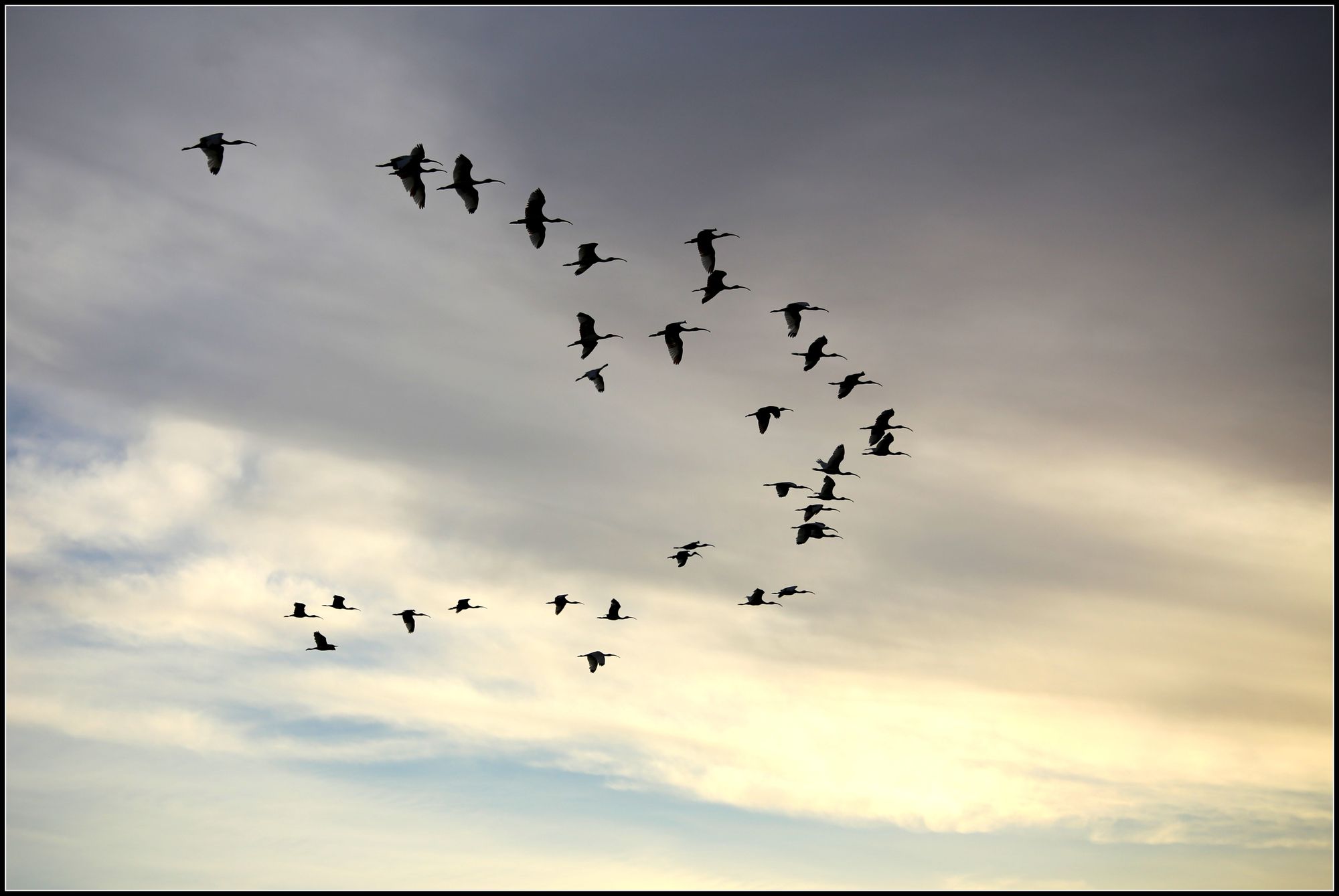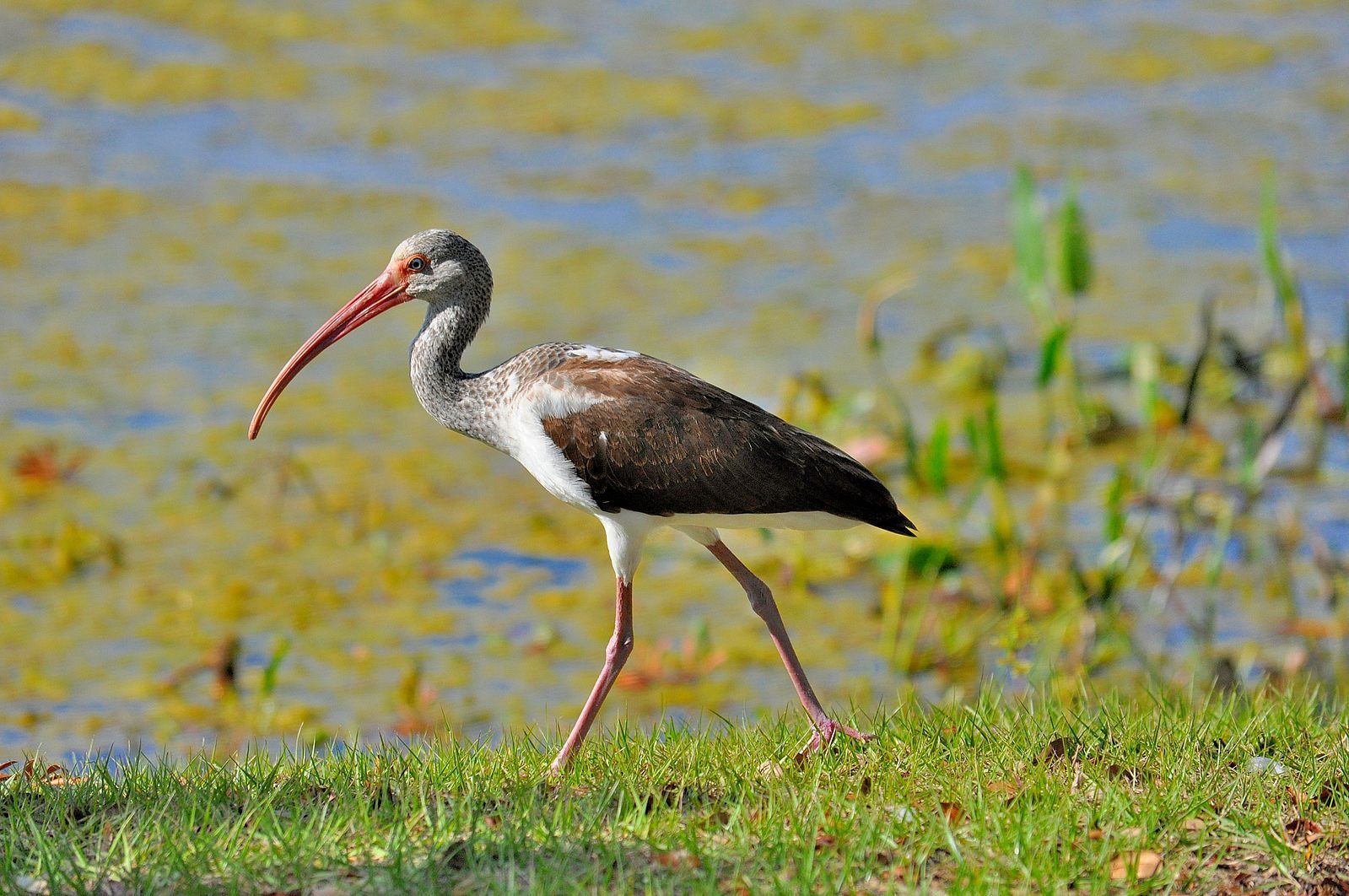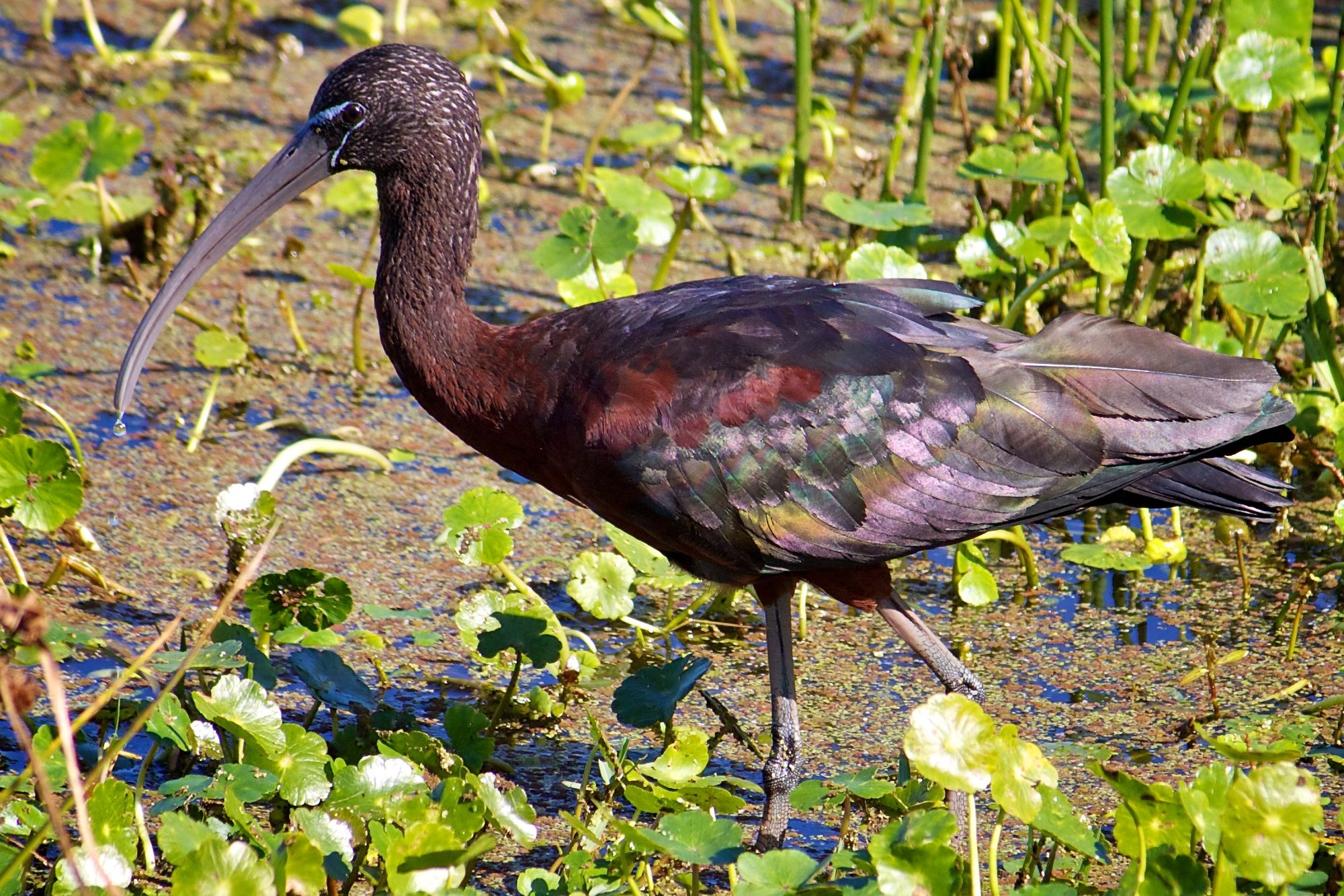
Flocks Foraging in Florida Backyards
A group of birds flying in formation is a common sight for many of my readers, but not as much here in Florida. Most v-formations seen are ducks or geese, which Florida has fewer of. We do have a wide variety of medium- to large-sized wading birds, but they are much more solitary outside of breeding season. There is, of course, one major exception: the white avian cattle of tropical wetlands, the American white ibis, Eudocimus albus.

You can recognize the ibis easily in flight, even in silhouette, both because of its tendency towards formation flying and because of how it holds itself. While herons and egrets fly with their necks retracted and their legs trailing behind them, ibises look more symmetrical with their necks outstretched. There is also their down-curved bill and the black wing tips (usually visible only in flight) that stand out from the white plumage and orange-pink bill and legs.
The white ibis is one of the most common birds that can be seen in the Florida backyard. Part of this is the proliferation of artificial ponds being created as part of continuing urban and suburban development. These provide additional foraging territory for the ibis, which depends on relatively shallow water to forage for crayfish and other crustaceans, with the occasional small fish or aquatic insect. This is because its foraging technique involves using its bill for tactile, non-visual probing. You can even see them at the beach, as they are not averse to feeding in the saltwater surf.
Why do white ibis fly in formation? For the same reasons that ducks and geese do so. Because we move through air so easily, it’s possible to forget that it is not just empty space. Air is made up of matter, just in gaseous form (78% molecular nitrogen and just under 21% molecular oxygen, with smaller amounts of gases like argon, carbon dioxide, helium, hydrogen, and methane). Moving through that causes drag, which increases with speed and for objects or creatures in flight. By flying in a ‘V’ (or sometimes a single angled line), birds reduce drag on the individuals farther back as the front of the formation breaks up the air molecules. The birds also fly at slightly different heights, taking advantage of the upwash of the bird in front of them to gain extra lift and reduce energy expenditure.
Ducks and geese undergo long-distance migrations for which such energy-saving measures are important, but ibis do not usually migrate to such an extent. However, they do go on daily foraging flights. In fact, studies of ibises in Florida during nesting season indicate that they spend, on average, three quarters of an hour per day in flight. When you are foraging for both yourself and your offspring, every bit of energy saved counts.
The white ibis is one of the most common backyard birds in Florida, but there are a few others that have the same body shape. If you see an ibis with brown plumage, that is the juvenile of the same species. It takes between two to six weeks after hatching for this plumage to develop. As it matures, the ibis will gradually molt and replace the brown feathers with white ones until they reach adulthood, which takes about two years on average.

The other ibis in Florida is actually the most widespread species of ibis, though much of its range is in Africa and Australia. The glossy ibis, Plegadis falcinellus, are much more nomadic than their white ibis cousins and evidence suggests that they originated in Africa and have spread naturally on their own to Florida, the Caribbean, and parts of the Atlantic coast of North America. They are less common and usually not found in such large groups of their own kind as the white ibis, though they can be seen feeding in the same locations with little conflict as their diets only have some overlap (with the glossy focusing more on insects compared to crustaceans for the white ibis).
The feathers of a glossy ibis are iridescent, meaning that their exact coloration depends upon both the light level and the angle at which the light hits the feathers. You can see varying shades of brown, purple, and green in the right conditions. It’s not likely to confuse them for a juvenile white ibis, because their bill and legs are grayish in color as opposed to the bright orange-pink of the other species.

If you are up early enough and in the right location, you can see flocks of white ibis leaving their roosts and flying out to their foraging areas in the morning. You can also see them returning in the evening. This is a daily spectacle that doesn’t require you to go much farther than your backyard here in Florida.
Part of why I chose this to explore the particular topic of ‘Backyard Florida’ is because I want to encourage others to find wonder in the natural world, but it can seem difficult to do so during our day-to-day lives. I want to share the wonders just outside your door, which you can experience as part of your day rather than separate from it. The white ibis is so ubiquitous here, it can be easy to not pay attention to it. However, even common wildlife have stories to tell and wonders hiding behind their familiar facades.